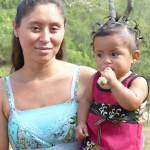A small group home—or family-style home—typically serves between 5 and 14 children who may be of similar age and gender. These homes may focus on care for particular special needs or include a wide range of boys and girls of different ages to model a more “family-like” environment. Children in small group homes are usually under the care of consistent live-in caregivers. This provides children with more stability than when many different caregivers rotate on the basis of shifts as in larger institutions. Ideally, children in small group homes are attending local schools and participating in community life.
Some youth and young adults may prefer living in small group homes to living with relatives or foster or adoptive families, especially for youth who have experienced abuse in family or foster placements, who have lived with their peers on the street, or who have participated in armed conflict. In this setting, youth can receive independent living skills training, education and vocational training, mentoring, apprenticeship opportunities in the community, and support for building lasting, caring relationships with adults who have youths’ best interests at heart.
Small group homes, similar to short-term care, are not considered to be the best long-term option. Permanency planning is important in helping children reunite with their birth families or transitioning children to stable and safe alternative family care as soon as possible.
RESOURCES
Scaling Down: Reducing, Reshaping and Improving Residential Care Around the World
Guidelines for the Alternative Care of Children
INSPIRATIONAL EXAMPLES
Partnering with the Local Church & Supporting Families to Care for Their Children

